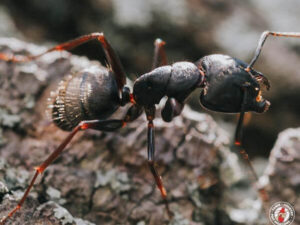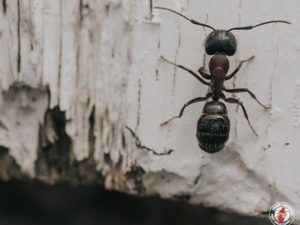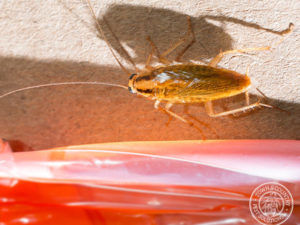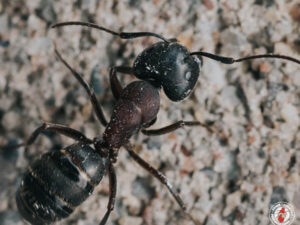
Now is the time of year when massive swarms of reproductive ants emerge from existing colonies in order to mate and establish new colonies as queen and king ants. In upstate New York, swarming ants, known as “alates,” emerge for a period lasting roughly two weeks during September and/or October. Swarming alates are not harmful to humans, but they can be a nuisance for homeowners, especially when large swarms slowly make their way through residential yards. According to Jody Gangloff-Kaufmann, a pest management professional at Cornell University, the amount and frequency of ant swarms vary year-by-year, and swarms of citronella ants alates are particularly easy to notice. This is because citronella ants establish colonies below the ground in well landscaped areas where trees, grass, shrubs and their insect prey are abundant. Citronella ants prey upon aphids, which are common insect yard pests that damage plant roots.
Gangloff-Kaufmann stated that 2016 saw an unusually high amount of ant swarms in residential areas of Rochester, which annoyed many residents who found the airborne insects to be a nuisance. Swarming ant alates are attracted to artificial light sources, which attracts them to houses where they tend to bump into windows. Also, since swarming alates die quickly if they do not find a mate quickly, it is not uncommon for residents to find thousands of dead alates littering their property. Rochester residents can expect to see ant swarms during the late afternoon and evening during this time of year, and they will not live long if they wind up indoors.
The brown marmorated stink bugs is another nuisance fall pests that is well known for invading homes where they hide within wall voids and other dark and hard-to-access indoor areas for the entire winter season. Come spring, these pests emerge from their hiding place and struggle to escape houses in order to return outdoors. This invasive pest was first discovered in upstate New York back in 2010, and every year since then has seen stink bug infestation cases increase in the state. Luckily, Cornell researchers have been releasing non-native parasitic wasps into the natural environment as a biological form of pest control. This program was only recently initiated, but researchers are confident that it will ultimate reduce nuisance stink bug issues in residential areas of Rochester.
Have you ever spotted an ant swarm?













